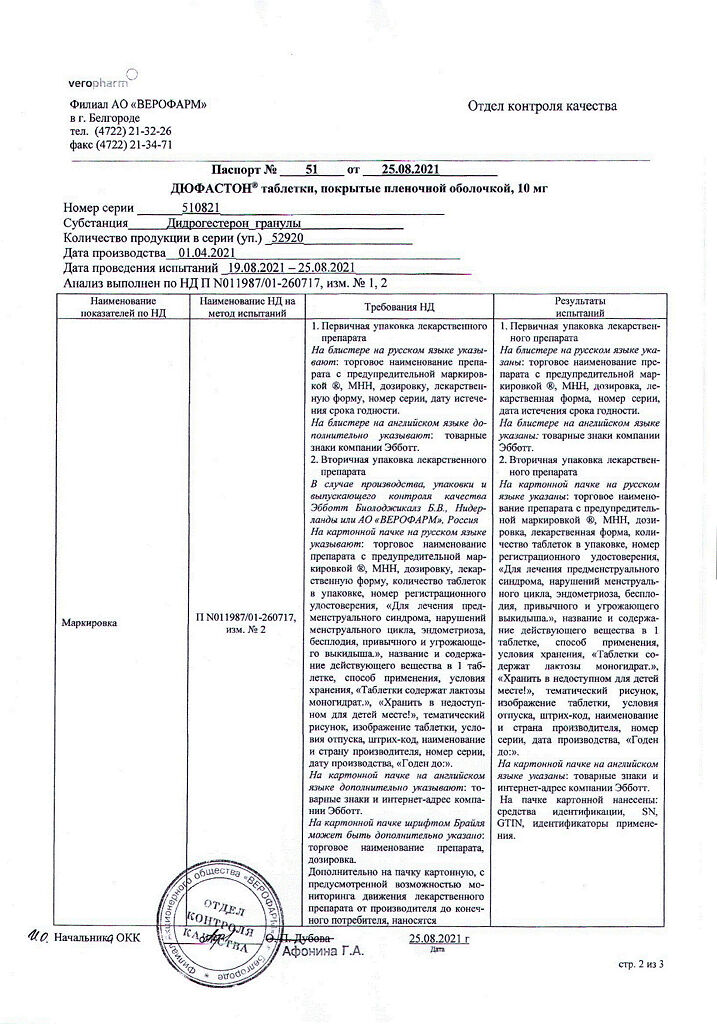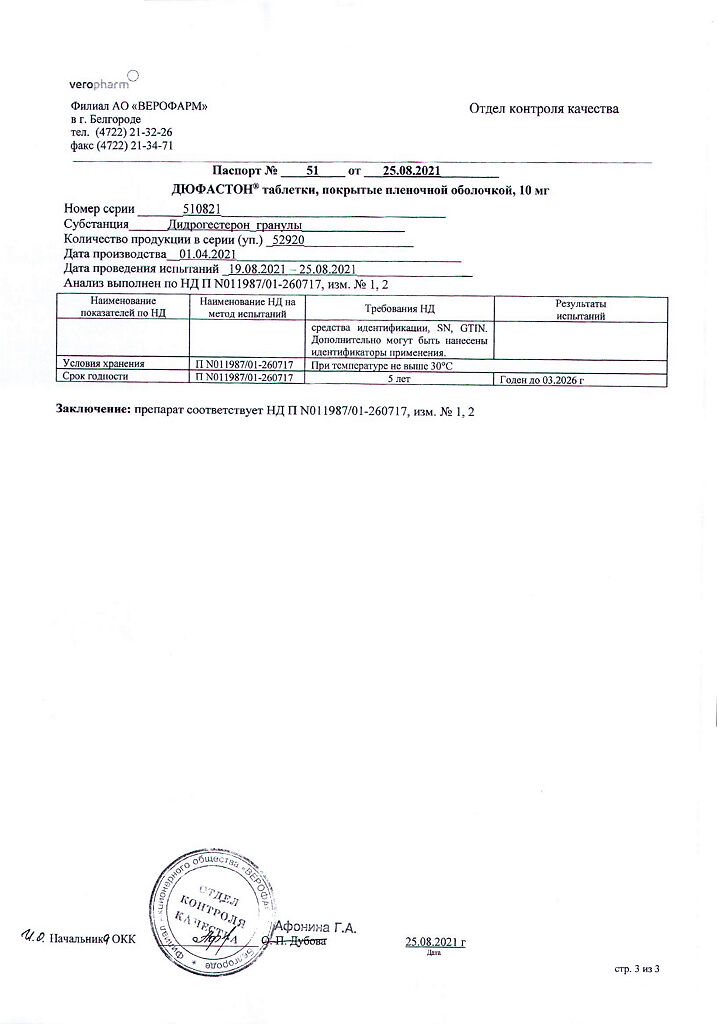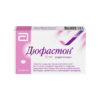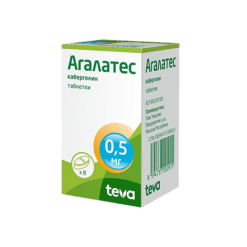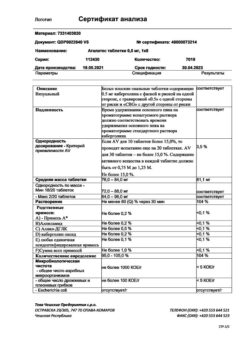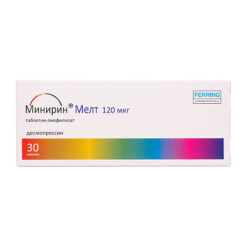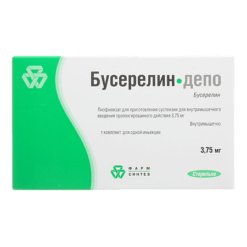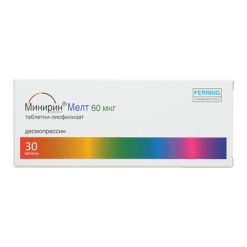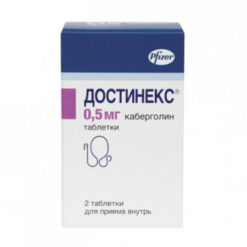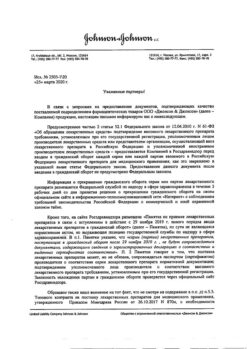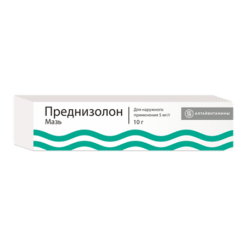No products in the cart.
Dufaston, 10 mg 28 pcs
€24.45 €20.37
Description
Dufaston® (dydrogesterone) is an oral progestagen indicated for all cases of endogenous progesterone deficiency. Didrogesterone ensures the onset of the secretion phase in the endometrium, thus reducing the risk of endometrial hyperplasia and/or estrogen-induced carcinogenesis.
It has no estrogenic, androgenic, anabolic or glucocorticoid activity.
Dydrogesterone is not a contraceptive. The therapeutic effect against the background of taking didrogesterone is achieved without suppressing ovulation.
Pharmacokinetics
Intake
Didrogesterone is rapidly absorbed after oral administration. The time to reach Cmax for didrogesterone varies between 0.5 and 2.5 h. The absolute bioavailability of didrogesterone (20 mg dose for oral versus 7.8 mg intravenous) is 28%.
The table shows the pharmacokinetics of didrogesterone and 20α-dihydrodihydrogesterone (DDH) after a single dose of 10 mg of didrogesterone:
| Pharmacokinetic parameters | Didrogesterone | DDH | |
| Cmax – maximum concentration (ng/mL) | 2.1 | 53.0 | |
| AUCinfusion – area under the pharmacokinetic concentration-time curve (ng×h/mL) | 7.7 | 322.0 |
Distribution
After IV administration of didrogesterone, the Vd in equilibrium is about 1400L. More than 90% of didrogesterone and DDH are bound to plasma proteins.
Metabolism
After oral administration, didrogesterone is rapidly metabolized to DDH. Cmax of the main metabolite of DDH is reached approximately 1.5 h after ingestion. Plasma concentrations of DDH are significantly higher than those of didrogesterone. The AUC and Cmax ratios of DDH to didrogesterone are about 40 and 25, respectively. The mean T1/2 of didrogesterone and DDH are 5 to 7 and 14 to 17 h, respectively. A common property of all metabolites is the preservation of the 4,6-dien-3-one configuration of the parent compound and the absence of a 17α-hydroxylation reaction. This explains the absence of estrogenic and androgenic effects of didrogesterone.
After oral administration of labeled didrogesterone on average 63% of the dose is excreted through the kidneys (in the urine). Total plasma clearance is 6.4 L/min. Dydrogesterone is completely eliminated from the body after 72 hours. DDH is detected in the urine mainly in the form of glucuronic acid conjugates.
Dose and time dependence of pharmacokinetic parameters
The drug is characterized by linear pharmacokinetics with single and multiple oral administration in the dosage range from 2.5 mg to 10 mg.
The pharmacokinetics of didrogesterone and DDH are not altered by multiple doses when comparing single and multiple oral doses.
The equilibrium state is reached 3 days after the start of treatment.
Indications
Indications
– endometriosis;
– infertility caused by luteal phase deficiency;
– threatened miscarriage;
– habitual miscarriage;
– premenstrual syndrome;
– dysmenorrhea;
– irregular menstruation;
– secondary amenorrhea;
– dysfunctional uterine bleeding;
– support of the luteal phase during the use of auxiliary methods of reproduction.
Pharmacological effect
Pharmacological effect
Duphaston® (dydrogesterone) is a progestogen that is active when taken orally and is indicated in all cases of endogenous progesterone deficiency. Dydrogesterone ensures the onset of the secretion phase in the endometrium, thereby reducing the risk of endometrial hyperplasia and/or estrogen-induced carcinogenesis.
Does not have estrogenic, androgenic, anabolic and glucocorticoid activity.
Dydrogesterone is not a contraceptive. The therapeutic effect of taking dydrogesterone is achieved without suppressing ovulation.
Pharmacokinetics
Suction
After oral administration, dydrogesterone is rapidly absorbed. The time to reach Cmax for dydrogesterone varies between 0.5 and 2.5 hours. The absolute bioavailability of dydrogesterone (20 mg oral dose compared to 7.8 mg IV administration) is 28%.
Distribution
After intravenous administration of dydrogesterone, Vd at steady state is about 1400 l. More than 90% of dydrogesterone and DHD are bound to plasma proteins.
Metabolism
After oral administration, dydrogesterone is rapidly metabolized to DHD. Cmax of the main metabolite of DHD is reached approximately 1.5 hours after taking the drug. The concentration of DHD in the blood plasma is significantly higher than the concentration of dydrogesterone. The ratios of AUC and Cmax of DHD to dydrogesterone are about 40 and 25, respectively. The average T1/2 of dydrogesterone and DHD ranges from 5 to 7 and from 14 to 17 hours, respectively. A common property of all metabolites is the retention of the 4,6-dien-3-one configuration of the parent compound and the absence of a 17α-hydroxylation reaction. This explains the lack of estrogenic and androgenic effects in dydrogesterone.
Removal
After oral administration of labeled dydrogesterone, an average of 63% of the dose is excreted through the kidneys (in urine). The total plasma clearance is 6.4 l/min. Dydrogesterone is completely eliminated from the body after 72 hours. DHD is found in urine mainly in the form of glucuronic acid conjugates.
Dependence of pharmacokinetic parameters on dose and time
The drug is characterized by linear pharmacokinetics with single and repeated oral administration in the dose range from 2.5 mg to 10 mg.
When comparing pharmacokinetic parameters with single and repeated oral administration, it was found that the pharmacokinetics of dydrogesterone and DHD do not change as a result of repeated use.
The state of equilibrium is achieved 3 days after the start of treatment.
Special instructions
Special instructions
Before starting treatment with Duphaston® for abnormal uterine bleeding, it is necessary to find out the cause of the bleeding. With prolonged use of the drug, periodic examinations by a gynecologist are recommended, the frequency of which is determined individually, but at least once every six months. In the first months of treatment for abnormal uterine bleeding, breakthrough bleeding or spotting may occur. If “breakthrough” bleeding or “spotting” spotting occurs after a certain period of taking the drug or continues after a course of treatment, you should contact your doctor and carry out appropriate additional examination, and, if necessary, do an endometrial biopsy to exclude neoplasms in the endometrium.
If dydrogesterone is prescribed in combination with estrogens for the purpose of hormone replacement therapy (HRT), you should carefully read the contraindications and special instructions associated with the use of estrogens.
HRT should be prescribed to treat menopausal symptoms that adversely affect the patient’s quality of life. The benefit/risk ratio of HRT should be assessed annually. Therapy should be continued until the potential benefit outweighs the potential risk.
There is limited data on the risks associated with HRT for the treatment of premature menopause. Due to the low absolute risk in young women, the benefit/risk ratio for them may be more favorable compared with that for older women.
Medical examination
Before starting the use of a combination of dydrogesterone and estrogen (for HRT), a complete individual and family history should be collected. An objective examination (including examination of the pelvic organs and mammary glands) should be performed to identify possible contraindications and conditions requiring precautions.
During treatment, it is recommended to periodically monitor individual tolerance to HRT. The patient should be informed about what changes in the mammary glands she should report to the doctor. (See “Breast cancer”). Studies including mammography should be carried out in accordance with generally accepted screening, taking into account individual characteristics and the clinical picture.
Hyperplasia and endometrial cancer
In women with an intact uterus, the risk of endometrial hyperplasia and cancer increases with long-term estrogen monotherapy.
Cyclic use of progestogens, incl. dydrogesterone (for at least 12 days of a 28-day cycle), or the use of a sequential combined HRT regimen in women with a preserved uterus may prevent the increased risk of endometrial hyperplasia and cancer with estrogen monotherapy.
Breast cancer
Available evidence suggests that the risk of breast cancer is increased in women treated with estrogen-progestogen HRT, and possibly also with estrogen monotherapy. The level of risk depends on the duration of HRT. The results of an epidemiological study and the WHI study (Women’s Health Initiative study) confirm an increased risk of developing breast cancer in women taking drugs containing a combination of estrogen and progesterone as part of HRT. The risk increases after approximately 3 years of use, but returns to the mean within a few (usually five) years after the end of therapy.
While taking drugs for HRT, especially with combined therapy with estrogens and progestogens, an increase in the density of breast tissue during mammography may be observed, which can make it difficult to diagnose breast cancer.
Ovarian cancer
Ovarian cancer is much less common than breast cancer.
Epidemiological data obtained from a large meta-analysis suggest a small increase in risk for women receiving HRT as estrogen monotherapy or combination therapy with estrogens and progestogens. An increase in this risk becomes apparent with treatment duration of more than 5 years, and after its cessation the risk gradually decreases over time. The results of a number of other studies, incl. WHI indicate that combined HRT is associated with a similar or slightly lower risk of ovarian cancer.
Venous thromboembolism
HRT is associated with a 1.3-3-fold increase in the risk of venous thromboembolism (VTE), i.e. deep vein thrombosis or pulmonary embolism. The likelihood is highest in the first year of HRT than in subsequent years. Patients with established thrombophilia have an increased risk of developing venous thromboembolism, and HRT may increase the risk. For this reason, HRT is contraindicated in such patients.
Risk factors for venous thromboembolism include estrogen use, advanced age, major surgery, prolonged immobilization, obesity (BMI >30 kg/m2), pregnancy, the postpartum period, systemic lupus erythematosus and cancer. There is no clear data on the possible role of varicose veins in the development of venous thromboembolism.
If long-term immobilization after surgery is necessary, you should stop taking HRT medications 4-6 weeks before surgery, resuming the drug is possible after the woman has fully recovered her motor activity.
Women with no history of VTE, but with a family history of thrombosis at a young age in close relatives, may be offered screening after detailed counseling about the possible limitations and disadvantages of therapy (screening reveals only some of the hereditary defects of the hemostatic system).
If thrombophilia associated with thrombosis is detected in family members or if there is a severe defect (for example, deficiency of antithrombin III, protein C, protein S, or a combination of defects), HRT is contraindicated.
If the patient is taking anticoagulants, the benefits/risks of HRT must be carefully assessed. Until a thorough assessment of the factors for the possible development of thromboembolism or the initiation of anticoagulant therapy is completed, HRT drugs are not prescribed. If thrombosis develops after initiation of therapy, HRT should be discontinued.
You should immediately consult a doctor if any of the symptoms indicating a possible thromboembolism appear (pain or swelling of the lower extremities, sudden chest pain, shortness of breath, blurred vision).
Coronary heart disease (CHD)
Data obtained from randomized controlled trials indicate a lack of protective effect against the development of myocardial infarction in women with and without coronary artery disease receiving HRT in the form of combination therapy with estrogens and progestogens or estrogen monotherapy.
The relative risk of developing coronary heart disease increases slightly during combined HRT. The absolute risk of developing CHD depends on age. The number of cases of coronary artery disease during the use of HRT is lower in healthy women at an age close to the onset of natural menopause, however, it increases in subsequent years.
Ischemic stroke
Combination therapy with estrogens and progestogens or estrogens alone is associated with a 1.5-fold increase in the risk of ischemic stroke. The relative risk does not change with age and does not depend on the time of menopause. However, the incidence of stroke varies with age, and the overall risk of stroke in women taking HRT will increase with age.
Excipients
The drug contains lactose monohydrate. Patients with rare hereditary diseases such as galactose intolerance, lactase deficiency or glucose-galactose malabsorption syndrome should not take the drug.
Impact on the ability to drive vehicles and operate machinery
Duphaston® has a slight effect on the ability to drive vehicles and machines. Caution should be exercised when operating vehicles and machinery, taking into account the possibility of adverse reactions from the nervous system (mild drowsiness and/or dizziness, especially in the first hours of administration).
Active ingredient
Active ingredient
Dydrogesterone
Composition
Composition
1 film-coated tablet contains:
Active ingredient: dydrogesterone – 10.0 mg;
Excipients: lactose monohydrate – 111.1 mg, hypromellose – 2.8 mg, corn starch – 14 mg, colloidal silicon dioxide – 1.4 mg, magnesium stearate – 0.7 mg.
Shell composition: opadry white Y-1-7000 (hypromellose, polyethylene glycol 400, titanium dioxide (E171)) – 4 mg.
Contraindications
Contraindications
hypersensitivity to dydrogesterone or other components of the drug;
diagnosed or suspected progestogen-dependent neoplasms (for example, meningioma);
bleeding from the vagina of unknown etiology;
liver dysfunction caused by acute or chronic liver diseases currently or in history (before normalization of liver function tests);
malignant liver tumors currently or in history;
galactose intolerance, lactase deficiency, glucose-galactose malabsorption syndrome;
breastfeeding period;
porphyria, currently or in history;
age under 18 years, due to the lack of data on effectiveness and safety in adolescent girls under 18 years of age;
spontaneous abortion (miscarriage) or failed miscarriage during luteal phase support as part of assisted reproductive technologies (ART).
When combined with estrogens
When used as indicated, hormone replacement therapy (HRT):
untreated endometrial hyperplasia;
arterial and venous thrombosis, thromboembolism currently or in history (including deep vein thrombosis, pulmonary embolism, myocardial infarction, thrombophlebitis, cerebrovascular disorders of the hemorrhagic and ischemic type);
identified predisposition to venous or arterial thrombosis (resistance to activated protein C, hyperhomocysteinemia, antithrombin III deficiency, protein C deficiency, protein S deficiency, antiphospholipid antibodies (anticardiolipin antibodies, lupus anticoagulant).
With caution
depression, currently or in history;
conditions that previously appeared or worsened during a previous pregnancy or previous use of sex hormones, such as cholestatic jaundice, herpes during pregnancy, severe skin itching, otosclerosis.
When using dydrogesterone in combination with estrogens, caution must be exercised in the presence of risk factors for the development of thromboembolic conditions, such as angina pectoris, prolonged immobilization, severe obesity (body BMI more than 30 kg/m2), old age, extensive surgical interventions, systemic lupus erythematosus, cancer; in patients receiving anticoagulant therapy; with endometriosis, uterine fibroids; a history of endometrial hyperplasia; liver adenoma; diabetes mellitus with or without vascular complications; arterial hypertension; bronchial asthma; epilepsy; history of migraine or severe headache; cholelithiasis; chronic renal failure; if you have a history of risk factors for the development of estrogen-dependent tumors (for example, first-degree relatives with breast cancer).
Side Effects
Side Effects
In clinical studies in patients receiving dydrogesterone therapy alone, the most common symptoms were headache/migraine, nausea, menstrual irregularities, and breast tenderness/sensitivity.
In clinical studies, as well as during post-marketing use (spontaneous reports), with the use of dydrogesterone alone, the following undesirable effects were observed with the frequency of development indicated below (number of reported cases/number of patients): often (from ≥1/100 to <1/10); uncommon (from ≥1/1000 to <1/100); rare (from ≥1/10,000 to <1/1000).
From the hematopoietic system: rarely – hemolytic anemia.
Mental disorders: infrequently – depression.
From the immune system: rarely – hypersensitivity reactions.
From the nervous system: often – migraine/headache; infrequently – dizziness; rarely – drowsiness.
From the gastrointestinal tract: often – nausea; infrequently – vomiting.
From the liver and biliary tract: uncommon – liver dysfunction (with jaundice, asthenia or malaise, abdominal pain).
From the skin and subcutaneous tissue: infrequently – allergic dermatitis (for example, rash, itching, urticaria); rarely – Quincke’s edema.
From the genital organs and mammary gland: often – menstrual irregularities (including metrorrhagia, menorrhagia, oligo-/amenorrhea, dysmenorrhea and irregular menstrual cycle); breast tenderness/sensitivity; rarely – swelling of the mammary glands.
Neoplasms: rarely – an increase in the size of progestogen-dependent neoplasms (for example, meningioma).
Other: rarely – swelling; infrequently – weight gain.
When using some progestogens in combination with estrogens as part of hormone replacement therapy, the following undesirable effects were noted: breast cancer, endometrial hyperplasia, endometrial cancer, ovarian cancer; venous thromboembolism; myocardial infarction, coronary heart disease, ischemic stroke.
A randomized, double-blind, two-parallel group study examining oral dydrogesterone versus intravaginal micronized progesterone for luteal phase support during assisted reproduction showed that the incidence of the most common treatment-emergent adverse events was comparable in both groups. The most common (at least 5% in one of the treatment groups, regardless of the drug): vaginal bleeding, nausea, pain during the procedure, headache, abdominal pain, biochemical pregnancy. The only treatment-emergent adverse event occurring in ≥2% of patients in each group was vaginal bleeding.
It is possible to terminate a pregnancy at an early stage (especially before the 10th week of pregnancy) – the incidence of pregnancy during ART procedures averages about 35%.
The safety profile observed in this study was as expected given the well-studied safety profile of dydrogesterone and the patient population.
Interaction
Interaction
Data obtained in vitro show that the main pathway for the formation of the main pharmacologically active metabolite DHD is carried out under the catalytic action of aldo-keto reductase 1C (AKR1 C) in the cytosol of human cells. Metabolic transformation then occurs within the cytosol by cytochrome P450 isoenzymes, predominantly via CYP3A4, resulting in the formation of several minor metabolites.
The substrate for transformation by the CYP3A4 isoenzyme is the main active metabolite of DHD. The metabolism of dydrogesterone and DHD may be accelerated by the combined use of substances that are inducers of cytochrome 450 enzymes, such as anticonvulsants (for example, phenobarbital, phenytoin, carbamazepine), antibacterial and antiviral drugs (for example, rifampicin, rifabutin, nevirapine, efavirenz) and herbal preparations containing, for example, St. John’s wort perforated. Ritonavir and nelfinavir, known as strong inhibitors of enzymes of the cytochrome system, when used together with steroids, on the contrary, have enzyme-inducing properties.
From a clinical point of view, increased metabolism of dydrogesterone may reduce its effectiveness.
Results from in vitro studies indicate that dydrogesterone and DHD at clinically relevant concentrations do not inhibit or induce cytochrome enzymes that metabolize drugs.
Overdose
Overdose
Data on cases of drug overdose are limited. Dydrogesterone was well tolerated after oral administration (the maximum reported daily dose was 360 mg).
Symptoms: clinical manifestations of a drug overdose are theoretically possible – nausea, vomiting, dizziness and drowsiness.
Treatment: there is no specific antidote; treatment should be symptomatic.
Storage conditions
Storage conditions
In a place protected from light at a temperature of 0 to 30 ° C.
Shelf life
Shelf life
The drug is stable for 5 years after release, provided it is stored at a temperature of 0 to 30 ° C in the original and undamaged packaging.
The drug should not be used later than the date indicated on the package.
Manufacturer
Manufacturer
Veropharm LLC, Russia
Additional information
| Shelf life | The drug is stable for 5 years after release if stored at 0 to 30 ° C in the original and undamaged packaging. The drug can not be used later than the date shown on the package. |
|---|---|
| Conditions of storage | In a place protected from light at a temperature of 0 to 30 ° C. |
| Manufacturer | Veropharm AO, Russia |
| Medication form | pills |
| Brand | Veropharm AO |
Related products
Buy Dufaston, 10 mg 28 pcs with delivery to USA, UK, Europe and over 120 other countries.



